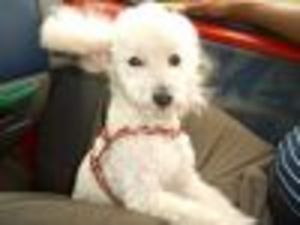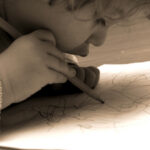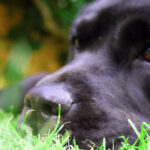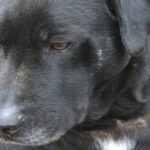The American Kennel Club (AKC) was founded in 1884 as a dog registry for purebred dogs.
The AKC is a non-profit organization whose purpose is to keep dog bloodlines pure to maintain certain standards of specific breeds. To be registered, a dog must have a three-generation, certified, purebred background. Under some circumstances, without such proof, dogs can gain “conditional registration” until the third generation is established.
The AKC Eukanuba National Championship will end its two-day, annual competition on Saturday, Feb. 6, 2010. It will be held in Long Beach, CA. Last month, 4000 dogs entered the competition, which will offer a total of $225,000 in cash prizes. One lucky dog will win “Best in Show” for $50,000 at the culmination of this event.
Updated information can be seen on the “Animal Planet,” which will be simulcast on the Discovery Channel on Saturday from 8 to 11 p.m. and will be re-broadcast at 11 p.m. (ET). See http://www.animal.discovery.com/convergence/eukanuba/akcchampionship/akcchampionship.html.
Usually, only the top 25 dogs from each AKC-recognized breed competes at this invitation-only event, but since this is the AKC’s 125th anniversary, any purebred, unaltered dog, 6 months or older, will be allowed to compete.
The AKC recognized 157 breeds in 2008. Usually, the same dogs are invited back. For this “special anniversary show, some dogs will come out of retirement for a final show-off. Sometimes a new breed is added once the bloodlines are proven to match a certain group standard.
Since this was an open invitation, 173 breeds were judged in other rings before being narrowed down to the finalists in the 7, publicly-presented breed groups. Taking place at the same time, under the same roof, were shows for the “AKC National Agility Invitational” and the “AKC National Obedience Invitational.”
Another award was given for the “Breeders Championship,” which was to recognize the breeder who had most furthered the sport for his breed that year. The breeders have the responsibility to maintain the pure blood lines for the “health, temperament and quality” of their breed.
The AKC recognizes seven breed groups along with a “miscellaneous” group: Sporting, Hounds, Working, Terrier, Toy, Non-sporting, and Herding.
The “Miscellaneous” group includes dogs that are being bred as a new category, many in other countries, with a breed that holds nationwide interest. The group must have “an active parent club, with serious and expanding activity over a wide geographic area.” (www.akc.org)
The miscellaneous group includes such diverse dogs as the American English Coonhound, the Cane Corso, the Finnish Lapphund, the Treeing Walker Coonhound, and the Xoloitzcuintli.
Since this is about the AKC’s standards of classifying dogs, the AKC guides will be used almost exclusively. For additional information about breeds in general, some information will be added from a “field guide” of over 300 breeds of dogs identified in Eyewitness Handbooks: Dogs by David Alderton.
1. Toy Group
Although the AKC site recognizes 13 breeds as Toys, while making it clear that some other groups include small-breed dogs.
Toys are simply delightful dogs, and are much tougher than they appear. They are great for people who live in small spaces; most are good lap warmers. Obviously, smaller dogs cost less to feed, create smaller messes, and shed less. These breeds are always among the most popular and easily recognized.
This group includes the Affenpinscher, Brussels Griffon, Cavalier King Charles Spaniel, Chihuahua, Havanese, Italian Greyhound, Maltese, Papillon, Pekingese, Pomeranian, Poodle, Pug, Shih Tzu, and Yorkshire Terrier. Some dogs with “toy” in the name are obvious such as the “Toy Fox Terrier.
This year’s winner was the Toy Poodle.
2. Terrier Group
This group (27 breeds shown) comes from dogs that were bred to hunt and kill vermin; thus, they do not always get along with other animals, including dogs. They are “feisty, energetic dogs whose sizes range from fairly small... to the grand, as in the Airedale Terrier.” Most have wiry coats, which need to be stripped (a grooming technique) to keep up their expected appearance.
“In general, they make engaging pets, but require owners with the determination to match their dogs’ lively characters.” (www.akc.org)
Additionally, Terriers’ “alert and curious nature, and their tendency to explore underground, means that they are more inclined to dig than other breeds, and they have an alarming tendency to disappear down rabbit holes when out for a walk.” (Dogs; Alderton.) Alderton concludes that Terriers often don’t make good lapdogs, but they do make loyal companions.
Terriers include “terrier” in their breed name, such as the American Staffordshire Terrier, Bull Terrier, Cairn Terrier, Scottish Terrier, Manchester Terrier, Parson Russell Terrier, Smooth Fox Terrier, Staffordshire Bull Terrier, and the easily-recognized exception-to-the-rule, the Miniature Schnauzer.
This year’s winner was the Scottish Terrier.
3. Working Group
These (26 breeds) dogs were bred to guard property, pull sleds, and perform water rescues. These are intelligent, capable animals, usually big in size and strength. Because of those characteristics, many are not suitable as average-family pets, but they make “solid companions” and “must be properly trained.”
Working dogs often have specialized functions: “seeing for the blind; hearing for the deaf; rescuing the injured; transporting humans and cargo across the Arctic terrain.” (Alderton)
Some of the most recognizable dogs among this class are the Boxer, Doberman Pinscher, Great Dane, Giant Schnauzer, Mastiff, Newfoundland, Rottweiler, Saint Bernard, Siberian Husky and the Standard Schnauzer.
Perhaps lesser known are the Akita, Bernese Mountain Dog, Greater Swiss Mountain Dog, Portuguese Water Dog, Samoyed, and Tibetan Mastiff.
In the U.S., most of these dogs may still be used to guard property and livestock, but other countries do not treat these breeds as kindly. In some countries, “they are little more than livestock themselves, and have traditionally been used to provide food and fur.” (Alderton)
This year’s winner was the Boxer.
4. Hound Group
These dogs (25 shown on AKC site) are most used for hunting; thus, they are often bred for their acute sense of smell so they can follow a trail. Others are bred to run down their quarry; those breeds are developed for stamina. Some of these dogs make a unique baying sound, which is not always pleasant to owners or non-owners within hearing range.
Most of these dogs are readily recognizable by hunters and non-hunters alike because they include such diverse breeds as the Afghan Hound, Basenji, Basset Hound, Beagle, Borzoi, Dachshund, Plott, Rhodesian Ridgeback, Saluki and Whippet.
Most give away their backgrounds with “hound” in their names as the Black and Tan Coonhound, Greyhound, English Foxhound, and Pharaoh Hound.
Hounds can be further classified as “sight” or “scent” hounds, depending on their hunting technique. “Hounds do not always adjust to an urban lifestyle and need plenty of space for exercise.” (Alderton)
This year’s winner was the Greyhound.
This group (28 shown on site) includes pointers, retrievers, setters and spaniels. These dogs are active and alert. Often used in water and the woods, they need a lot of “invigorating” exercise.
Sporting Dogs include American Water Spaniel, Brittany, Cocker Spaniel, English Setter, English Springer Spaniel, Golden Retriever, Irish setter, Labrador Retriever, Pointer, Vizsla, and the Weimaraner.
These may also be classified as “Gundogs,” which have “very responsive and friendly dispositions,” and they usually have water-resistant coats. (Alderton)
This year’s winner was the Irish Setter.
6. Non-Sporting Group
These are sturdily-built dogs with very different personalities and appearances. This group (17) includes the American Eskimo Dog, Bichon Frise, Boston Terrier, Bulldog, Chow Chow, Dalmatian, French Bulldog, Keeshond, Lhasa Apso, Poodle, and the Tibetan Spaniel. You might expect some of these to be listed in other groups, but this group is diverse and many of these breeds are well-known as house pets.
This year’s winner was the Standard Poodle.
7. Herding Group
The AKC created this classification in 1983 as a sub group of the “Working Group.” These dogs (22 listed) usually herd animals, but many have been accepted as house pets and never get the chance to herd, except for, perhaps, small children in their households.
Considered intelligent and often making excellent companions, this group includes the Australian Cattle Dog, Australian Shepherd, Bearded Collie, Border Collie, Collie, German Shepherd Dog, Old English Sheepdog, the Welsh Corgis, Puli, and Shetland Sheepdog.
Most of these dogs herd by jumping and nipping at the heels of sheep or cattle.
Originally bred much larger so they could protect “livestock from predators such as wolves and bears,” more recently these dogs were bred for “controlling the movement of the herds.” (Alderton)
This year’s winner was the Rough Collie.
From among these top 7, the “Best in Show” was the Scottish Terrier,” which won $50,000 and will now be eligible to move on into the world’s largest dog show, the Crufts.
Sources:
The AKC website at www.akc.org/breeds. AKC breeds by group. Retrieved 1-21-10 for each group.
AKC information about “Conditional Registration” from its website at Https://www.akc.org/reg/conditional_reg_info.cfm. Retrieved 9-9-08.
“The seven groups in all-breed shows.” AKC Eukanuba National Championship: Animal Planet. Http://animal.discovery.com/convergence/eukanuba/akcchampionship/akcchampionship.html. Retrieved 2-6-10.
David Alderton. Eyewitness Handbooks: Dogs – The visual guide to over 300 dog breeds from around the world. DK Publishing, Inc. 1993.





